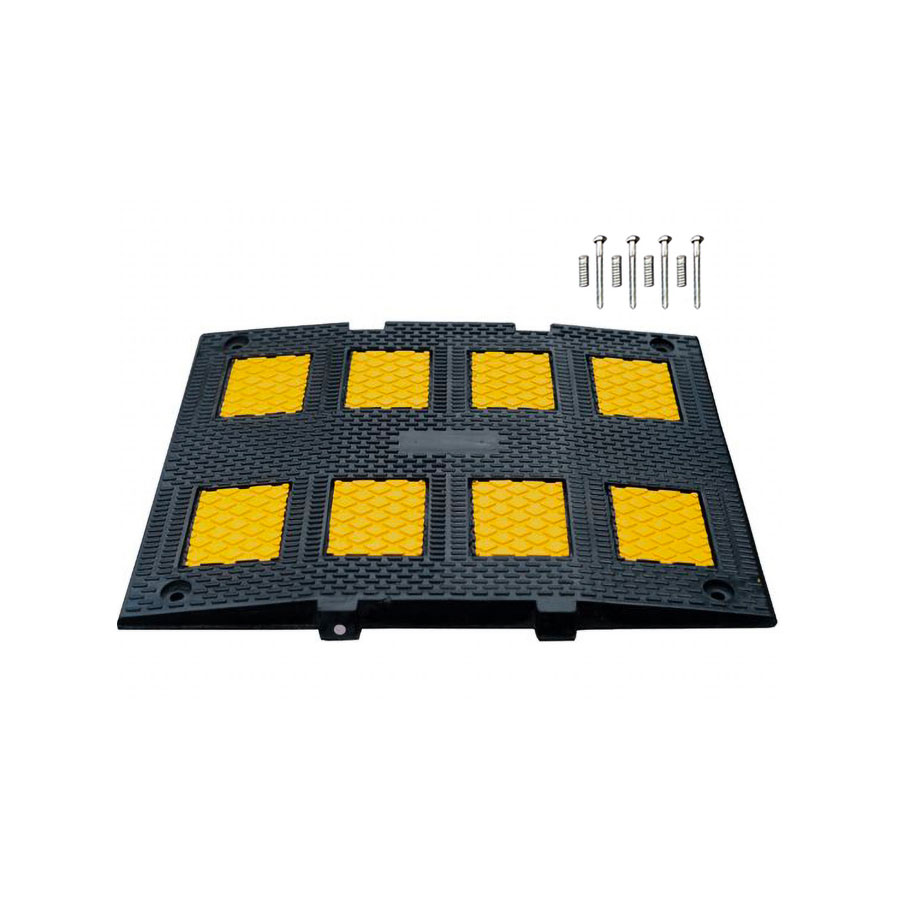In every city and community, the safety and efficiency of our streets are of utmost importance. However, finding a balance between traffic flow and safety is a constant challenge for city planners and engineers. One solution that has been implemented to address this issue is the use of road speed bumps.
Understanding the Purpose of Road Speed Bumps
Road speed bumps play a crucial role in traffic calming measures and aim to reduce vehicle speed, improving safety for pedestrians and drivers alike. In this article, we will explore the benefits and challenges of using road speed bumps to achieve a smoother and safer driving experience.
Understanding the Purpose of Road Speed Bumps
A common sight on many streets, road speed bumps are designed to reduce vehicle speed and improve safety for pedestrians and drivers. These traffic calming measures play an important role in mitigating accidents and injuries, making our streets safer for everyone.
However, their purpose goes beyond just slowing down traffic. Road speed bumps are also used to create a safer environment for pedestrians, especially in residential areas and near schools. Additionally, they can help to reduce noise pollution and improve air quality by encouraging drivers to slow down and drive more smoothly.
While the main goal of road speed bumps is to enhance safety, it is important to consider the impact they have on traffic flow. Placing them in inappropriate locations or designing them without considering traffic flow can lead to congestion and frustration among drivers. Finding a balance between these two factors is crucial for a smoother and safer driving experience.
The Effect of Road Speed Bumps on Traffic Flow
Road speed bumps are a commonly used traffic calming measure that has been proven to reduce vehicle speed and improve safety for pedestrians and drivers. However, while they serve an important purpose, they can also have a negative impact on traffic flow. This is because road speed bumps can disrupt the smooth flow of traffic, leading to increased travel time and congestion. Additionally, emergency vehicles can also be slowed down by road speed bumps, which can be a concern in case of an emergency. This highlights the need to carefully consider the placement and design of road speed bumps to find a balance between safety and traffic flow.
Considering Safety and Traffic Flow
Finding a balance between safety measures and traffic flow is crucial when implementing road speed bumps. While these bumps are effective in reducing accidents and injuries, they can also have a negative impact on traffic flow. It is important to consider factors such as speed limit, road type, and surrounding areas when placing and designing road speed bumps. In addition, alternative traffic calming measures such as roundabouts and speed cameras should also be considered to maintain traffic flow while ensuring safety. City planners and engineers must work together to find the right balance between these two factors and involve the community in the decision-making process to address concerns and ensure a smooth and safe driving experience for all. Successful examples of cities and communities that have found this balance can serve as inspiration for future implementations.
Challenges in Implementing Road Speed Bumps
Implementing road speed bumps is not without its challenges. City planners and engineers face several obstacles when it comes to installing road speed bumps in a way that balances traffic flow and safety. These challenges include budget constraints, as well as resistance from the community.
The cost of installing and maintaining road speed bumps can be a barrier for some cities, especially those with limited funds. Additionally, community resistance can arise due to concerns about the potential negative impact on traffic flow and increased travel time. This can lead to delays in implementing road speed bumps, or even abandonment of the idea altogether.
Furthermore, finding a balance between safety and traffic flow can be a delicate and complex process. Factors such as speed limits, road types, and surrounding areas must be carefully considered to ensure the effectiveness of road speed bumps while minimizing disruptions to traffic flow. This requires collaboration and communication between city planners, engineers, and the community to address concerns and find the best solution for each specific location.
In order for road speed bumps to be successfully implemented, these challenges must be addressed and overcome. This may involve finding creative solutions to budget constraints and actively involving the community in the planning and decision-making process. With open communication and a collaborative approach, a balance can be achieved between traffic flow and safety for a smoother and safer driving experience on our streets.
Successful Examples of Balancing Traffic Flow and Safety with Road Speed Bumps
There are many cities and communities around the world that have successfully implemented road speed bumps while maintaining traffic flow and ensuring safety. One such example is the city of Oxford in the United Kingdom. They have strategically placed road speed bumps in areas with high pedestrian and vehicle traffic, while also taking into consideration the speed limit and surrounding road conditions. This has resulted in a decrease in accidents and injuries, without causing major disruptions in traffic flow. Another successful example is the city of Portland, Oregon, which has implemented a neighborhood greenway system that includes road speed bumps along with other traffic calming measures such as roundabouts and speed cameras. This has not only improved safety for residents but also reduced traffic congestion and improved air quality. These successful examples show that with proper planning and community involvement, a balance can be achieved between traffic flow and safety with the use of road speed bumps.
Conclusion
In today’s fast-paced world, the balance between traffic flow and safety on our streets is essential. Road speed bumps, while effective in reducing accidents and injuries, can also disrupt the smooth flow of traffic. However, successful examples from cities and communities have shown that finding a balance between these two factors is possible.
By considering factors such as speed limits, road types, and involving the community in the decision-making process, road speed bumps can be implemented while maintaining traffic flow and ensuring safety. However, challenges such as budget constraints and community resistance must be addressed to achieve this balance.
As technology and research continue to advance, there is potential for even more effective and efficient solutions in managing traffic flow and safety on our streets. It is crucial for city planners and engineers to work together and find innovative ways to strike a balance between these two essential factors on our roads. With a collaborative effort, we can create a safer and smoother driving experience for all.








